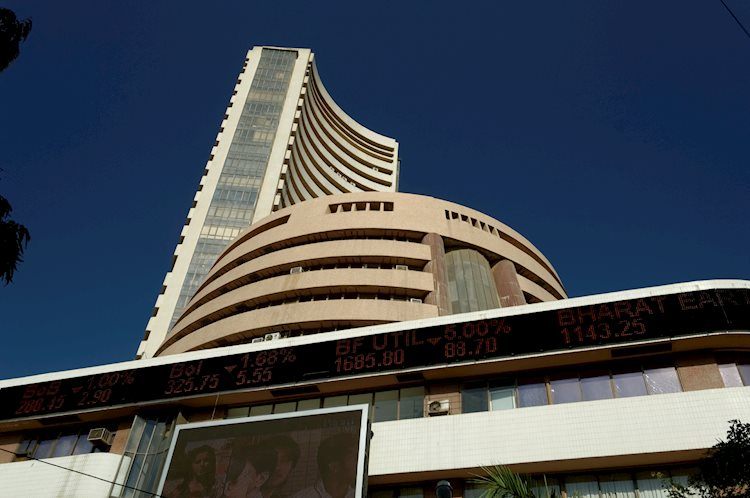
- India’s Nifty and Sensex returned to the red after opening with modest gains on Wednesday.
- Nifty and Sensex lose over half a percent, notwithstanding the previous rebound.
- Wednesday’s US GDP revision eyed ahead of Thursday’s US PCE inflation, India’s Q3 GDP data.
The Sensex 30 and Nifty 50, India’s key benchmark indices, tripped into negative territory after opening with slight gains on Wednesday.
Asian markets turned cautious, led by the renewed downside in Chinese stocks even as Hong Kong scrapped property tightening measures to aid economic recovery.
Indian traders remain on edge ahead of the country’s third-quarter Gross Domestic Product (GDP) data and the expiry of monthly derivatives contracts due later this week.
Also, of note remains the top-tier US economic news, including the second estimate of the GDP report on Wednesday.
At the time of writing, the National Stock Exchange (NSE) Nifty 50 and the Bombay Stock Exchange (BSE) Sensex 30 lose about 0.60% on the day to trade at 22,052.45 and 72,649.05 respectively.
Stock market news
- The top gainers on Nifty include Infosys, TCS, HDFC Life Insurance, Tech Mahindra and Bajaj Finance. Meanwhile, the main laggards are Apollo Hospital, Asian Paints, Bajaj Auto, Powergrid and Maruti.
- The NSE’s Index Maintenance Sub-Committee is scheduled to meet on Wednesday, after market hours to review the constituents of various indices of the Nifty.
- Foreign Institutional Investors (FIIs) offloaded equities worth INR1,509.16 crore on Tuesday, according to exchange data.
- The third term of the Narendra Modi government will see transformative reforms in sectors such as digital infrastructure, space, artificial intelligence, specialized warehousing, agriculture and tourism, India’s Finance Minister Nirmala Sitharaman said on Tuesday.
- The US stock markets closed mixed on Tuesday, as markets weighed a 6.1% slump in the US Durable Goods Orders data and a dip in the CB Consumer Confidence index.
- Wednesday’s US GDP revision and personal spending data will be closely eyed before the key US PCE inflation data and India’s Gross Domestic Product (GDP) data due on Thursday.
- Markets are currently pricing in just about a 20% chance that the US Federal Reserve (Fed) could begin easing rates in May, much lower than an over 90% chance a month ago, according to the CME FedWatch Tool. For the June meeting, the probability for a rate cut now stands at about 60%, down from 70% seen a few days ago.
Indian economy FAQs
The Indian economy has averaged a growth rate of 6.13% between 2006 and 2023, which makes it one of the fastest growing in the world. India’s high growth has attracted a lot of foreign investment. This includes Foreign Direct Investment (FDI) into physical projects and Foreign Indirect Investment (FII) by foreign funds into Indian financial markets. The greater the level of investment, the higher the demand for the Rupee (INR). Fluctuations in Dollar-demand from Indian importers also impact INR.
India has to import a great deal of its Oil and gasoline so the price of Oil can have a direct impact on the Rupee. Oil is mostly traded in US Dollars (USD) on international markets so if the price of Oil rises, aggregate demand for USD increases and Indian importers have to sell more Rupees to meet that demand, which is depreciative for the Rupee.
Inflation has a complex effect on the Rupee. Ultimately it indicates an increase in money supply which reduces the Rupee’s overall value. Yet if it rises above the Reserve Bank of India’s (RBI) 4% target, the RBI will raise interest rates to bring it down by reducing credit. Higher interest rates, especially real rates (the difference between interest rates and inflation) strengthen the Rupee. They make India a more profitable place for international investors to park their money. A fall in inflation can be supportive of the Rupee. At the same time lower interest rates can have a depreciatory effect on the Rupee.
India has run a trade deficit for most of its recent history, indicating its imports outweigh its exports. Since the majority of international trade takes place in US Dollars, there are times – due to seasonal demand or order glut – where the high volume of imports leads to significant US Dollar- demand. During these periods the Rupee can weaken as it is heavily sold to meet the demand for Dollars. When markets experience increased volatility, the demand for US Dollars can also shoot up with a similarly negative effect on the Rupee.